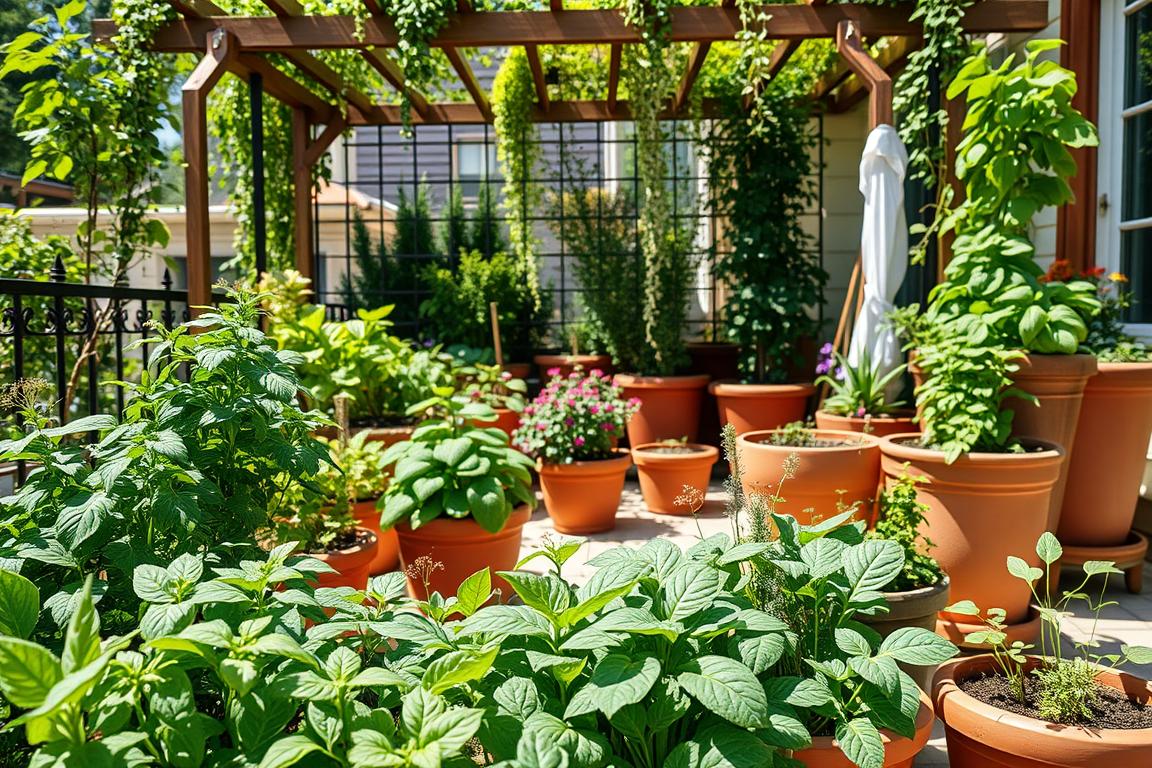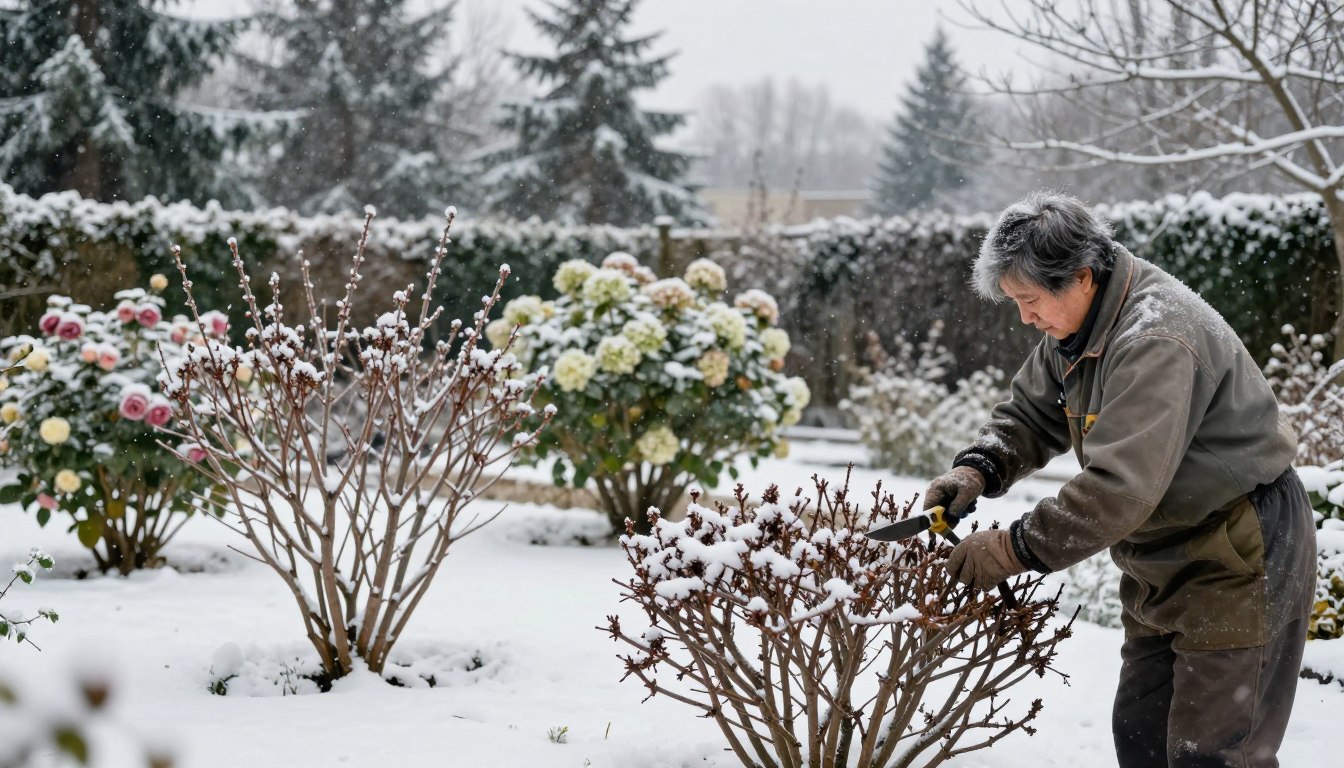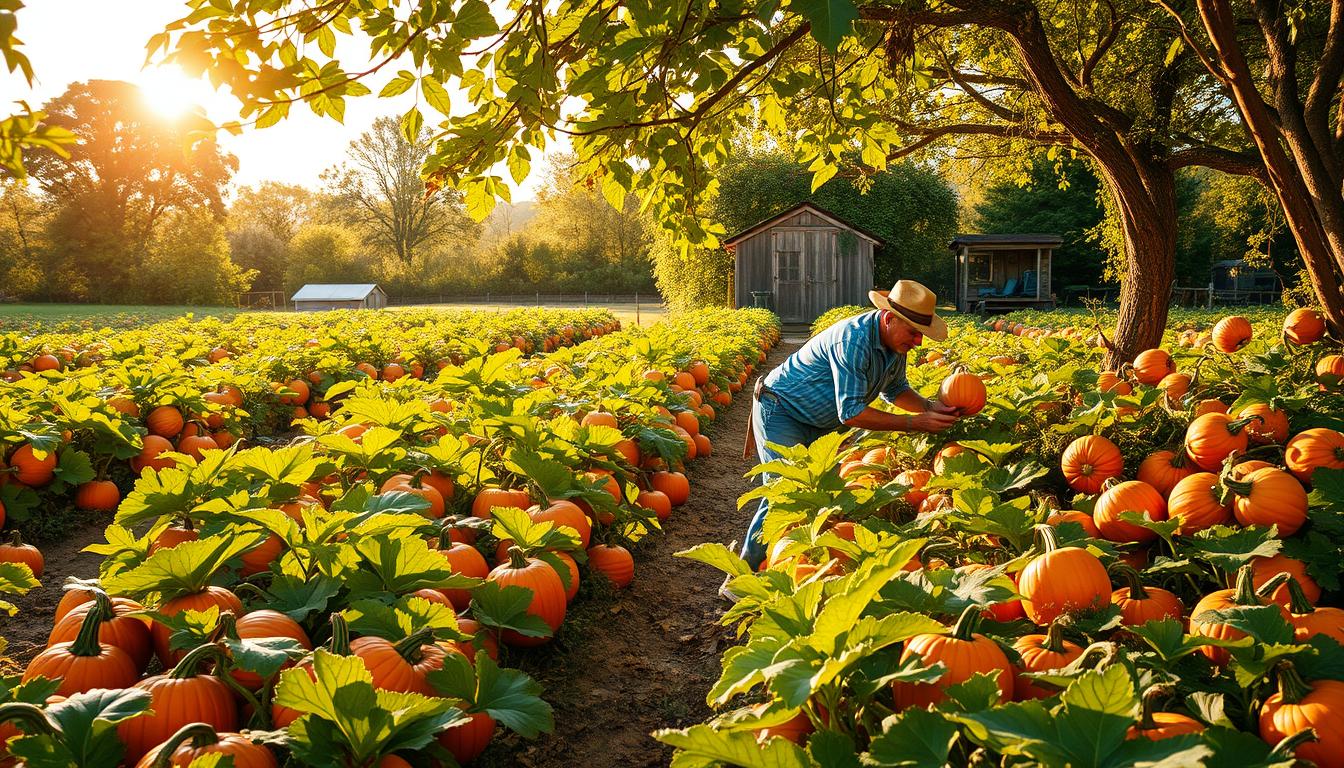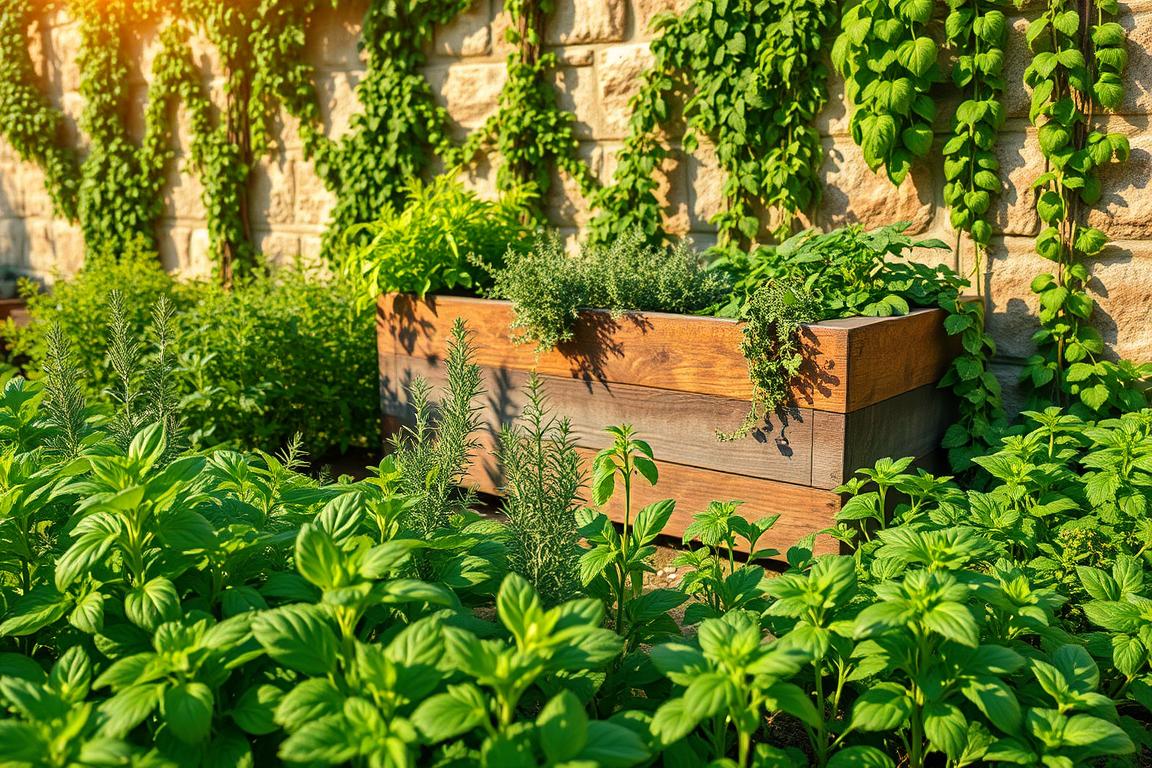Container gardening is a great way to start gardening, even if you have little space. Angela Judd says it’s perfect for adding more space to your garden or making it portable.
Urban gardening and beginner vegetable gardening are getting more popular. People want to grow their own food in small areas. Container gardening lets you move plants to get the right sunlight and care.
Growing pot-friendly vegetables can be very rewarding. It gives you fresh produce right at your door. This guide will cover the basics of container gardening and help beginners start their urban gardening journey.
Key Takeaways
- Container gardening is ideal for small spaces and beginners.
- It allows for flexibility in moving plants to different locations.
- Pot-friendly vegetables can thrive in containers with proper care.
- Urban gardening can provide fresh produce right at home.
- Starting with the right vegetables is crucial for success.
Why Container Gardening Works for Beginners
Container gardening is great for beginners. It’s flexible and easy to care for. You can grow many vegetables, even in tiny spaces. This is perfect for city folks or those with small yards.
Benefits of Growing Vegetables in Pots
Container gardening has many perks. It makes the soil warmer, which means you can plant earlier. Steven Biggs says this helps grow veggies sooner in spring. Plus, it lets you grow more in less space.
The main benefits are:
| Benefit | Description |
|---|---|
| Improved Soil Warmth | Containers warm up faster, allowing for earlier planting. |
| Space Maximization | More crops can be grown in a limited area. |
| Ease of Maintenance | Containers are easier to manage and maintain. |
Space Planning for Small Areas
Container gardening is great for small spaces. You can use your patio, balcony, or indoor spots. Remember to plan for the plants’ size and air space.
Tips for Space Planning:
- Choose compact or dwarf varieties of vegetables.
- Use vertical space with trellises or wall-mounted containers.
- Ensure adequate air circulation around plants.
Essential Container Gardening Supplies
To start container gardening, you’ll need a few things. You’ll need containers, potting mix, and your veggies or seeds.
- Containers: Pick pots that are at least 5-gallon for most veggies.
- Potting Mix: Use a mix that drains well, not garden soil.
- Vegetable Seeds or Seedlings: Pick varieties that grow well in containers.
The Best Vegetables to Grow in Pots: A Beginner's Guide to Selection
Choosing the right vegetables is key for a successful container garden. There are many options, but some are better for pots than others.
Leafy Greens: Lettuce, Spinach, and Kale
Leafy greens are perfect for container gardens. They grow fast, need little space, and are easy to care for. Lettuce, spinach, and kale do well in pots. They like well-draining soil and some shade, making them great for small spaces.
Herbs: Basil, Cilantro, and Mint
Herbs are also great for container gardens. Basil, cilantro, and mint are favorites that grow well in pots. They need little care and can be picked often, helping them grow bushy. Most herbs prefer well-draining soil and some sun.
Root Vegetables: Radishes, Carrots, and Beets
Root vegetables can grow in containers if the pots are deep enough. Radishes, carrots, and beets are good choices. They need deep pots for their roots and well-draining soil to avoid soggy soil.
Fruiting Vegetables: Cherry Tomatoes, Peppers, and Cucumbers
Fruiting vegetables like cherry tomatoes, peppers, and cucumbers are popular for containers. They need more care, like support and regular feeding. But they can be very productive and rewarding.
Vegetables to Avoid in Containers
While many veggies can grow in containers, some don’t do well. Vegetables that need a lot of space, like pumpkins or corn, or those with deep roots, such as potatoes, are not good for containers.
Container Size and Soil Requirements

In container gardening, two key things matter: the size of the container and the quality of the soil. The container’s size affects how well the roots grow and the plant’s health. The soil’s quality is important for nutrients and keeping water.
Matching Pot Sizes to Vegetable Types
Vegetables need different sizes of containers. Tomatoes and peppers need big containers because their roots grow a lot. They need pots that are at least 12-18 inches deep. But, herbs and radishes do well in smaller containers, needing only 6-8 inches deep.
The Spruce says it’s important to match the container size to the vegetable type. A bigger pot means more room for roots, better soil, and more stability for the plant.
Soil Mixtures for Successful Container Growing
The soil mix in container gardening is very important. A good mix should hold moisture but also let water drain to avoid root rot. It should have peat moss or coconut coir for moisture, perlite or vermiculite for drainage, and compost for nutrients.
A balanced soil mix helps plants grow well and increases yields. Don’t use garden soil from your yard. It can make the soil in containers too dense and stop water from draining.
Maintenance Tips for Potted Vegetable Gardens

To keep your potted vegetable garden healthy and productive, follow a few key practices. Make sure your container gardening vegetables get enough water, food, and pest control. Also, harvest them at the right time.
Watering and Feeding Container Vegetables
Watering is key for easy vegetables to grow in pots. They need consistent moisture, more so when they’re producing fruit. Check the soil daily and water when it’s dry to the touch.
Feeding your container vegetables is also crucial. Use a balanced fertilizer made for vegetables. Follow the label’s instructions to avoid over-fertilizing, which can harm your plants.
Managing Pests and Diseases in Container Gardens
Pests and diseases can spread quickly in container gardens if not managed. Regularly check your plants for pests or diseases. Use organic or integrated pest management (IPM) strategies to handle any issues.
Common pests include aphids, whiteflies, and spider mites. Diseases like powdery mildew or leaf spot can also occur. Remove affected leaves or treat with fungicides to control disease.
| Pest/Disease | Signs | Management |
|---|---|---|
| Aphids | Small, soft-bodied insects on stems and leaves | Spray with water, use neem oil |
| Powdery Mildew | White, powdery coating on leaves | Remove affected leaves, improve air circulation |
Harvesting Techniques for Container Vegetables
Harvesting your vegetables at the right time is important. For vegetables for small spaces, like cherry tomatoes and leafy greens, check them often.
For leafy greens, you can pick individual leaves or cut off the entire head. Cherry tomatoes should be picked when fully colored and slightly soft.
Regular harvesting encourages more production. For example, picking cherry tomatoes often will make the plant produce more.
By following these tips, you can enjoy a rich harvest from your potted vegetable garden. Whether you’re growing easy vegetables to grow in pots or more challenging ones, proper care will lead to success in your container gardening.
Conclusion
Growing your own veggies in pots is rewarding. It gives you fresh produce right in your backyard or patio. By picking the right vegetables and following some tips, you can have a great harvest.
For growing veggies in pots, choose varieties that do well in containers. Leafy greens, herbs, and cherry tomatoes are great choices. They not only grow well but also add beauty to your patio.
To succeed, match pot sizes to the veggies you’re growing. Use the right soil and keep up with watering and feeding. Starting a pot garden brings many benefits, like more food and less waste.
Now you’re all set to start your container garden. Enjoy the fruits of your labor by growing your own veggies.






